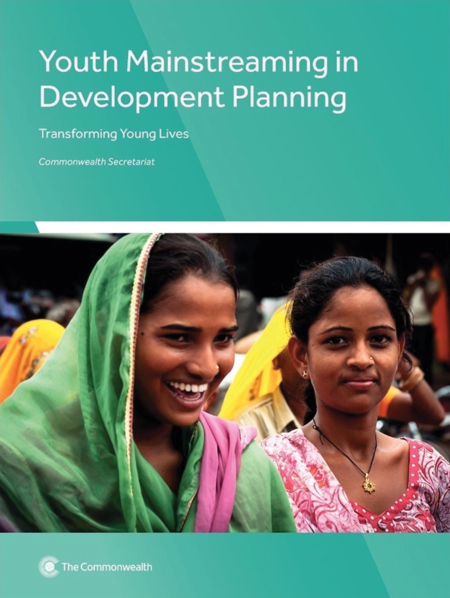Around the world, young people are large in number which is growing. They constitute one-quarter of the world's population, and one-third of the population in developing nations. Youths have the endless potential which makes them the most important and productive guiding force of any nation. Development of a society as well as a country mainly depends on the exploration and utilisation of the potentialities of the young people. The better we involve the young people in development planning, the better our hopes for strengthening the positive spirit of young people, and making progress towards the broader framework of inclusive development. Yet, young people do not benefit equitably from development outcomes. In the global north, they are poorer than their parents' generation. In the global south, the dividends of economic growth are not adequately reaching them. Young people also face challenges in participating in decisions that affect their social, political and economic empowerment. Against this backdrop, youth mainstreaming is an essential part of creating an egalitarian world and achieving social equality for youths. The Commonwealth publication 'Youth Mainstreaming in Development Planning: Transforming Young Lives' is a compilation of concepts to initiate dialogue and mobilise consensus around visions and strategies for young people. It also includes practical tools and techniques that will support initiatives to mainstream youth rights, voices and capabilities across government and other institutions.
 The publication is divided into three parts. Part 1: Concepts and Discussions defines youth mainstreaming and aligns it to broader human rights, legal and development frame-works including the Sustainable Development Goals (SDGs), and to social and policy contexts. Youth mainstreaming is a transformative process that ensures youth participation in all spheres and levels of development planning, without which positive and equitable outcomes for the young people are not possible. It is based on a guiding vision of all social groups benefiting equally from the fruits of development in accordance with their full human potential. This section also helps us to understand intergenerational inequity and how these social inequities result in tangible unequal outcomes for young people. For example, young people may be marginalised in society in specific ways by virtue of attitudes towards them, labelling and stereotyping them as being irresponsible, lazy, rebellious, angry, and so on. Their right to accessible education is often undermined by laws and policies that challenge affordable education provision. In the workplaces, young people may be marginalised in decision-making because of the perception that their views are immature and not based on 'experience'. This section encourages pre-planning dialogue and discussion around youth mainstreaming that is critical to reaching consensus on processes and goals.
The publication is divided into three parts. Part 1: Concepts and Discussions defines youth mainstreaming and aligns it to broader human rights, legal and development frame-works including the Sustainable Development Goals (SDGs), and to social and policy contexts. Youth mainstreaming is a transformative process that ensures youth participation in all spheres and levels of development planning, without which positive and equitable outcomes for the young people are not possible. It is based on a guiding vision of all social groups benefiting equally from the fruits of development in accordance with their full human potential. This section also helps us to understand intergenerational inequity and how these social inequities result in tangible unequal outcomes for young people. For example, young people may be marginalised in society in specific ways by virtue of attitudes towards them, labelling and stereotyping them as being irresponsible, lazy, rebellious, angry, and so on. Their right to accessible education is often undermined by laws and policies that challenge affordable education provision. In the workplaces, young people may be marginalised in decision-making because of the perception that their views are immature and not based on 'experience'. This section encourages pre-planning dialogue and discussion around youth mainstreaming that is critical to reaching consensus on processes and goals.
Part 2: Implementation provides practical guidance for the implementation of youth mainstreaming through discussions of planning and operational imperatives, including analytical tools, checklists and short case studies, some of them based on experiences influenced by the Commonwealth's strategies. Implementation requires attention to strong partnerships across stakeholders including diverse youth groups and the youth sector, and an ability to involve and respect all stakeholders committed to youth rights. It is also crucial to ensure that youth mainstreaming does not reinforce inequality and injustice.
Part 3: Full Case Studies complements the briefer case studies throughout the publication with fuller studies of youth mainstreaming initiatives in the sectors of poverty alleviation, health, employment, finance, justice and urban planning from across the Commonwealth and elsewhere. A total six case studies are included in this section. They are 1) Youth and Poverty Alleviation - India and South Africa; 2) Youth and Health - South Africa and India; 3) Youth and Employment - Kenya and Uganda; 4) Youth Budgets - Ghana and Uganda; 5) Youth and Justice - United Kingdom; and 6) Youth and Urban Planning - Nepal and Kenya. The case studies have several features. They represent both national and sub-national initiatives and highlight links between them - e.g. Ghana's youth budget, where local efforts ultimately influence national outcomes as well. The case studies are drawn from civil society and government programmes and show how different players within a single sector can influence each other. They demonstrate government, civil society and other stakeholders' accountability to young people, to human rights aspirations and legislations, and to global and national development frame-works.
The writer is an independent researcher.
------------------------------------------
Youth Mainstreaming in Development Planning: Transforming Young Lives
Published by Commonwealth Secretariat, 2017
Pages: 292, ISBN: 978-1-84929-164-4
© 2025 - All Rights with The Financial Express
